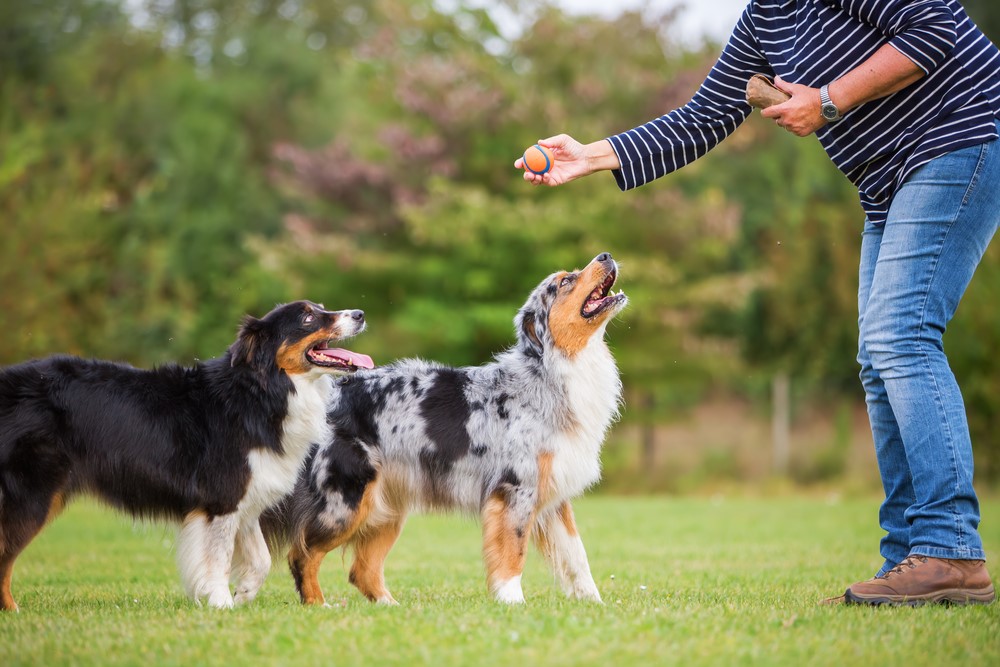Main Index
In Store
Our Web Store
Miniature Schnauzer Picture Gallery
Latest Dog Blogs
- What Are The Basic Commands To Train A Dog?
- PaySafe As The Most Popular Type Of Deposit
- Everything You Need To Know About Pet Sales
- Dogs Contribute To Our Physical And Mental Well Being
- How To Choose Where To Bet On Greyhounds In 2022
- Volunteer With Animals - How To Help Dogs Around The World
- Basic Understanding Of The House Edge
- Why You Should Get A Dog
- Top 20 Popular Dog Names Around The World
- Constipation in Dogs and How to Find Solutions
Key Power Dog Training Tips to Improve Your Dog's Behaviour
- 01/04/2021
Training your dog to learn even some basic commands can help improve his behaviour and even prevent bad behaviour in the long run. So, how do you begin training your dog with obedience?
You may want to take a few classes for dog training, but it is not necessary. You can actually conduct the dog training yourself. Just remember to adopt the right mindset so the training session will be enjoyable for you both. Here are five dog training tips to help you enhance your dog’s behaviour.
Sit
“Sit” can be considered one of the most basic and easiest instruction to teach your dog. Use the following steps:
● Hold a doggy treat directly to his/her nose.
● Move the treat up and encourage his/her head to move along with the treat, making his rear move lower at the same time, ending in a sitting posture.
● Say the command “sit,” and once he is seated, provide affection and give him the desired munchies.
Do this process repeatedly, every day, and incorporate this command before mealtime, during walks, and other circumstances in which you want him to be seated and calm.
Come
Teaching your dog to come helps keep him/her from getting in trouble or in dangerous situations. It also helps bring your dog to your side in the event that your grip on the leash becomes loose, or if you accidentally left the front door open Here are the steps for this command.
● Put a collar and leash on your dog.
● Approach the dog, look at them at eye level and say the command “come,” while pulling gently on his leash.
● When he approaches you, give affection and reward him with a treat.
By the time your dog has mastered this command, remove the leash and practice this in an enclosed, safe area.
Down
This is a more difficult command because it trains your dog to come to you in a submissive position. You can do this by keeping the training relaxed and positive, especially for anxious or fearful dogs. Here are the steps:
● Hold a treat that smells good.
● Hold it up to close to your pet’s snout and let him sniff it.
● Move your hand along to the floor and make him follow the smell.
● Then, move your hand to the ground in front of your dog so his body can be encouraged to move with his head.
● Say “down” when he is in the desired position, and provide affection and a doggy treat.
Never force your dog into a down position. Be patient with this training and encourage your dog’s every step towards the correct position.
Stay
This training comes after right after you teach your dog how to sit. Here are the steps.
● Once your dog is in a sitting position, open your hand in front of you and say “stay.”
● Make a few steps backwards and give your dog affection and a treat if he stays.
● Increase the number of steps away you take gradually before giving him the treat.
This training promotes self-control, so do not be sad if he does not master it right away. Be extra patient with puppies and high-energy dogs, because they love moving around instead of sitting and waiting.
Leave it
This command helps ensure the safety of your dog when curiosity takes over, such as sniffing something dangerous. The goal in this command is to help your dog learn that he can get something better when he ignores something.
● As usual, use a treat in your closed hand.
● Open your hand with the treat and command “leave it.”
● Ignore when he/she starts to sniff, mouth, lick, paw, or bark to claim the treat.
● Once your dog gives up, give him affection and a treat.
● Repeat the process and only provide a treat when your dog starts moving away from your fist and sees you.
You can successfully train your dog with all of these dog training tips. However, if you do not have the time to do it, you can work with professional dog trainers. Scottsdale dog training specialises in canine psychology for all dogs, including those with fear, anxiety, aggression, and barking issues.
Abigail Jones
Abigail Jones is a writer contributing to Find Your Inner Dog Training. Her passion for writing allows her to make sure she always offers creative and unique angles to her readers. She enjoys walking her dogs Sophie and Magpie whenever she has free time.
Please Help Us
IrishDogs.ie takes a lot of time, money and hard work to produce. But we do it because we believe our perspective matters because it might well be your perspective, too.
Our future could be much more secure with your help. Please SUPPORT us by clicking on the Donate Button at the Top Right of your screen.
Quick Search
Donate
Latest Dog Pods
- Tips on How to Stop Your Dog from Biting
- Beware - Not All Advertised Dog Rescues Really Are! How Can You Know The Truth?
- Helpful Tips For Dog Obedience Problems
- How to Keep Dogs From Eating Poop
- Dog Grooming Tips - A General Overview of the Very Basics of Dog Grooming
- Recognising Different Types of Dog Obedience Problems
- 5 Important Tips On Feeding A Puppy




